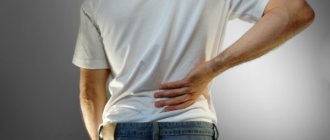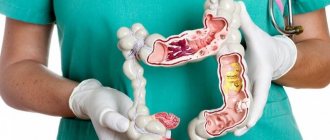Urolithiasis
(urolithiasis) is a disease characterized by the formation of stones in the urinary organs. Stones can be found in all organs of the urinary system, however, they most often occur in the kidneys and bladder. Also a serious problem are stones in the ureter, where they enter after descending from the kidneys. Urolithiasis can develop at any age, but most cases of its initial detection occur between the ages of 20-55 years.
Causes of kidney stones
Factors that provoke the formation of stones are internal and external. Internal reasons are:
- genetic predisposition;
- pyelonephritis, urethritis, cystitis and other inflammatory diseases of the urinary system of infectious origin;
- metabolic disorders: hyperparathyroidism (hyperfunction of the parathyroid glands), gout;
- infectious diseases not related to the urinary tract (angina, osteomyelitis, furunculosis, salpingoophoritis, etc.);
- excess, deficiency or increased activity of certain enzymes in the body;
- diseases of the liver and biliary tract;
- congenital anomalies of the kidneys, ureters;
- gastrointestinal diseases (gastritis, pancreatitis, etc.);
- lack of physical activity due to bed rest (due to injuries, illnesses).
External reasons include:
- adverse environmental impacts;
- characteristics of the soil, climate, chemical composition of the water used in the area of residence (the presence of some salts in the composition);
- sedentary lifestyle;
- harmful working conditions (hard physical work, high temperatures, chemical fumes, etc.);
- abuse of foods rich in purines (nitrogen compounds that are converted into uric acid in the human body): such products include meat and offal, fish (especially river fish), asparagus, cauliflower, broccoli;
- drinking too little fluid.
How are stones classified?
Kidney stones vary depending on their chemical composition.
- Oxalates. This stone contains calcium salts of oxalic acid. They are distinguished by their dense structure, dark color, and spiky, uneven surface.
- Phosphates. Such stones consist of calcium salts of phosphoric acid. They have a soft and crumbly consistency. Their surface is smooth and slightly rough, the color is white-gray. They are characterized by intensive growth, especially if there is an infection in the body.
- Urats. These are crystals of uric acid salts. They are distinguished by a dense structure, light yellow or brick color, smooth or finely dotted surface.
- Carbonates. The formation of such stones occurs when calcium salts of carbonic acid settle. They have a soft structure, light shade, smooth surface. Can be of various shapes.
- Cystine. They consist of the sulfur compound of the amino acid cysteine. Such stones are distinguished by their soft consistency, smooth surface, round shape, and white-yellow color.
- Cholesterol. They can be found quite rarely. These stones contain cholesterol. They are distinguished by a soft crumbly consistency and black color.
In some cases, the kidney may contain a mixed stone, rather than a homogeneous one.
Symptoms
The following signs indicate the presence of kidney stones:
- Pain in the lumbar region, side or lower abdomen (can also radiate to the groin area). Unpleasant sensations usually intensify during physical activity, movement, driving on uneven roads, and also after drinking large quantities of liquid or alcohol. The pain can be periodic or constant (in this case, it intensifies for periods, then subsides, but does not go away completely). A common type of stone pain is renal colic. The attack lasts from several hours to several days. The cramping pains wax and wane, and at times can be so severe that the patient cannot stop screaming.
- Blood in urine. Urine may be intensely red or pinkish. And in some patients, blood in the urine is detected only by test results.
- Delayed urination when there is an urge. This is a dangerous condition that requires immediate medical attention. It is caused by blockage of the urinary tract with stones. The patient is unable to empty the bladder independently; a catheter is required. Urinary retention may be accompanied by vomiting, itching, diarrhea, cramps, headache, cold sweat, chills, and fever.
- Sand in urine.
- Frequent urge to urinate.
- Nausea and/or vomiting.
- Cloudy urine.
- Pain when urinating.
- Increased temperature and blood pressure.
Signs usually appear when the disease is advanced. In the early stages, the pathology can be asymptomatic for a long time. Therefore, it is important to undergo annual preventive examinations with a urologist.
general information
The formation of kidney stones is a fairly common pathology. The disease is also called nephrolithiasis. Practical urology shows that stones can be found in both adults and children. In most cases, the disease is diagnosed in men. According to statistics, the disease affects the right kidney, and only 17-20 percent are diagnosed with bilateral localization of stones.
If a person suffers from urolithiasis, stones can be found not only in the kidney, but also in the bladder, ureter, and urethra. Basically, the initial formation of stones occurs in the kidney, after which the stones descend into the lower urinary tract. Stones can be single or multiple, small or large. Small stones do not exceed three millimeters, and large ones can reach ten to fifteen centimeters.
Diagnostics
Diagnosis of the disease is carried out by a urologist, who, if necessary, refers the patient to a surgeon. First, a history is taken and the patient is examined. Then the following mandatory studies are prescribed:
- general and biochemical urine and blood tests;
- urography (x-ray examination of the urinary tract);
- Ultrasound of the urinary system.
Additionally, the following may be assigned:
- computed tomography of the kidneys (to assess the size and density of the stone and the condition of the surrounding tissues);
- radionuclide kidney scan (to assess kidney function);
- urine culture for microflora (to detect infection in the urinary system).
Factors contributing to stone formation
1. Consumption of foods rich in stone-forming substances
2. Diseases and conditions associated with stone formation
- Hyperparathyroidism
- Renal tubular acidosis
- Jejunoileal anastomosis
- Crohn's disease
- Condition after ileal resection
- Malabsorption syndrome
- Sarcoidosis
- Hyperthyroidism
3. Family history of urolithiasis
4. Drugs associated with stone formation
5. Anomalies in the structure of the urinary system associated with stone formation
- Tubular ectasia
- LMS stricture
- Diverticulum/calyx cyst
- Ureteral stricture
- Horseshoe kidney
- Urinary tract infections
Treatment
Surgical treatment is prescribed in the following cases:
- if conservative therapy is ineffective;
- in the presence of complications.
Before surgery, the patient is prescribed antibiotics, antioxidants and drugs that improve blood microcirculation.
Surgical intervention can be:
- minimally invasive (low-traumatic, the operation is performed through small punctures or natural holes);
- traditional (open surgery is performed through incisions).
Minimally invasive methods include:
- Laparoscopic operations. A small incision (1-2 cm) is made in the lumbar region, through which a special instrument, a trocar (a tube) and a probe, are inserted into the kidney. If the stone is small, it is removed immediately; if it is large, it is first crushed.
- Endoscopic operations. Such surgical treatment is carried out through natural routes or through small punctures using an endoscope.
Traditional surgical methods include:
- Nephrolitomy is an operation in which a stone is removed from the pelvis or calyces of the kidney;
- Ureterolithotomy – surgical removal of a stone from the ureter;
- Pyelolithotomy – removal of a mass from the renal pelvis.
Traditional surgical methods are resorted to if the stone is large or the patient has kidney failure.
Description of pathogenesis
The disturbed colloid balance and altered renal parenchyma contribute to the emergence of physicochemical complex processes, as a result of which kidney stones begin to form. This refers to unfavorable local conditions in the urinary tract, that is, infections. This happens with pyelonephritis, nephrotuberculosis, cystitis, urethritis, prostatitis, hydronephrosis, diverticulitis.
The outflow of urine slows down, it becomes oversaturated with salts, then the salts precipitate. Sand and microliths are not excreted in urine. The development of the infectious process will lead to the release of inflammatory substrates into the urine. This includes mucus, bacteria, pus, and protein. Because of such substances, the primary core of the future stone is formed. Near this nucleus crystallization of salt occurs, which is contained in excessive quantities in the urine.
Prevention
After surgery, it is important to take preventive measures. Otherwise, stones may recur. Prevention includes:
- Drinking enough water (1.5-2 liters per day). And in hot weather or during active physical activity, it is recommended to drink once or twice an hour (100-150 ml of water).
- Dieting. The development of the diet should be carried out by a doctor, taking into account the composition of the stones, as well as the characteristics of the body and the patient’s medical history.
- Daily physical activity to improve blood flow. Walking will be enough. However, they must be regular and include at least 10,000 steps per day (it is not necessary to take that many steps at a time).
- Limit the amount of alcohol consumed (or better yet, give it up altogether).
- Reducing the amount of salt consumed - to reduce the load on the kidneys.
- Avoiding hypothermia.
- Refusal to drink drinks that are too cold (especially those containing yeast: kvass, beer).
- Timely treatment of diseases, especially infectious ones.
- Annual general urine test.
- Spa treatment. A patient who has undergone surgery to remove kidney stones is recommended, if possible, to visit mineral water resorts annually (1-2 times).
The doctor may also prescribe drug therapy aimed at preventing the recurrence of stones.
Medicines and substances that increase risk
- Acetazolamide
- Efilrin
- Phosphate-binding anatcides
- Uricosuric substances
- Calcium/Vitamin D
- Guaifenesin
- Topiramate
- Triamterene
- Vitamin C
In modern medicine there is no remedy that cures urolithiasis. After pain relief and stone removal, the only goal is to prevent relapse
The process of stone formation can be controlled. Proper nutrition and plenty of water in the diet will reduce the likelihood of recurrence.
Urolithiasis disease. Modern methods of treatment
Authors:
- Doctor of Medical Sciences, Professor I.A. Aboyan
- Ph.D. S.V. Pavlov
- Ph.D. V.A. Sknar
- Ph.D. YES. Romodanov
- A.N. Tolmachev
- Ph.D. S.V. Grachev
Anatomy of the urinary system
The kidney is a paired organ that produces and secretes urine. The bud has a bean-shaped shape, dark red color, and dense consistency. The dimensions of a kidney in an adult are (usually) the following: length 10-12cm, width 5-6cm and thickness 3-4cm. The weight of the bud ranges from 120 to 200 g. The surface of the bud is smooth.
The kidney is distinguished by anterior and posterior surfaces, a convex lateral edge and a concave medial edge. In the middle segment of the medial edge there is a depression - the renal hilum, lymphatic vessels. The kidneys are located in the lumbar region, on either side of the spinal column and lie outside the abdominal cavity (retroperitoneal). The kidneys lie asymmetrically: the left kidney is located slightly higher than the right. There are individual characteristics of the position of the kidneys. There are high and low locations of the kidneys.
The structural and functional unit of the kidney is the nephron (there are more than a million nephrons in the kidney). Throughout its entire length, the nephron is surrounded by blood vessels and it is in it that the blood is cleansed of toxins and urine is formed. The length of all nephrons in two kidneys is about 100 km.
The renal pelvis is shaped like a flattened funnel. Gradually tapering downwards, the renal pelvis passes into the ureter.
The ureter is a paired organ that originates from the narrowed part of the renal pelvis. The function of the ureter is to drain urine from the kidney into the bladder. The ureter has the shape of a tube 20-35 cm long. and 8 mm wide.
The bladder is an unpaired hollow organ that serves as a reservoir for urine, which is discharged from the bladder through the urethra. A full bladder has a round shape; its capacity in an adult is 250-500 ml.
Urolithiasis (UCD) is a disease characterized by the formation of stones (calculi) in the kidneys from substances contained in urine. Violations of the physicochemical state of urine lead to the precipitation of crystals and amorphous salts, which, in combination with an organic base (blood clot, fibrin, cellular detritus, bacteria, etc.) form stones. They can be in one or both kidneys, multiple and single, small, or in the form of a large coral-shaped formation. KSD is observed equally often in men and women; less often - in children. The incidence varies significantly across countries and between territories within countries. In Russia, KSD is more common among residents of Central Asia, the North Caucasus and Transcaucasia, in the Volga, Kama, Don, and other basins. One of the causes of KSD is pyelonephritis (inflammation of the kidney parenchyma). Lifestyle, nutrition, and the quality of drinking water are of great importance.
If the stone is in the kidney, a dull, aching pain appears in the lumbar region. Blood may appear in the urine. Pain is associated with movement and changes in body position. If the stone is in the ureter, pain from the lumbar region shifts to the groin area, and can radiate to the thigh or genitals. When the stone is located in the lower part of the ureter, the patient experiences a frequent urge to urinate.
An approximate diagram of the distribution of pain depending on the location of the stone.
If the stone completely blocks the ureter, the urine pressure in the kidney increases sharply, which causes an attack of renal colic. This is a severe, acute pain in the lower back, spreading to the abdominal area. The attack can last for several minutes or several days. Often the attack ends with the release of small stones or their fragments.
If the stone is in the bladder, the patient experiences pain in the lower abdomen, radiating to the perineum and genitals. The pain may worsen with urination and movement. Another manifestation is an increased urge to urinate. The urge may occur when walking, shaking, or physical activity. During urination, a symptom of “stream interruption” may be observed - the flow of urine is suddenly interrupted and resumes only after a change in body position.
You need to know that ICD can go almost unnoticed for a long time. For example, if a stone located in the kidney is large, immobile and does not cause a disturbance in the outflow of urine, then there may be no pain at all.
According to the structure of stones there are:
- uric acid (urate) - they consist of salts of uric acid, have a yellow-brown color, dense, with a smooth surface
- oxalate - these stones consist of salts of oxalic acid, they are black-brown in color, dense with a rough surface that may have spines
- Phosphate stones are soft, gray-white in color, they crumble easily
- mixed stones - the inner part of such stones is called the core and is formed from one type of salts, and the shell of salts is of a different chemical composition.
- Cystine stones are the hardest and have a smooth surface.
Knowledge of the structure of the stone plays an important role when choosing methods of treatment and prevention. For the first time in the south of Russia, in the clinical diagnostic department, along with chemical X-ray phase analysis of urinary stones, which makes it possible to classify stones according to the mineralogical principle.
Diagnosis of ICD
The diagnosis of urolithiasis, like any other disease, is based on general clinical signs, laboratory data and instrumental diagnostic methods. Urolithiasis is easily diagnosed if hematuria appears after renal colic and urinary stones pass. In the absence of these signs, the diagnosis is made based on the combination of the above symptoms and urological examination data.
Ultrasound examination (US) plays a special role in the diagnosis of urolithiasis.
Ultrasound provides information about the shape and contours of the kidney, the condition of the renal collecting system, the presence of a stone in the kidney, its shape, size, density (densitometry) or shows indirect signs of the presence of a stone in the ureter - expansion of the collecting system.
Ultrasound image of a kidney stone
X-ray examination.
X-ray examination is one of the main methods for diagnosing urolithiasis: survey and intravenous urography (a study with the introduction of intravenous contrast agent) - allows you to determine the presence of stones, their number, location, size, kidney function, and the condition of the urinary tract. The detection of a stone that does not block X-rays (that is, not visible on a survey image - X-ray non-contrast) most likely indicates that it is urate.
CT scan
In recent years, computed tomography has become increasingly important, allowing not only to improve the diagnosis of urolithiasis, to detail the anatomical relationships of the stone and the collecting system, but also to perform densitometry (determining the density of the stone and bones).
Skeletal bone densitometry can be useful in diagnosing osteoporosis, which in turn can cause the formation of calcium stones.
The scope of diagnostic procedures should be determined by your attending physician.
A standard examination may include:
- survey urography, excretory (according to indications) urography;
- Ultrasound of the kidneys, bladder (with densitometry of the kidney stone).
- Ultrasound of the parathyroid glands (for radiopaque, recurrent, multiple, bilateral kidney stones).
- X-ray phase or chemical analysis of the stone (if it has already passed from the patient).
- bone densitometry.
- general urine analysis.
- litos - test.
- urea, blood creatinine.
- total blood protein.
- Na, Ca, K, P of blood and urine.
- Ca ionization, magnesium, uric acid, urine oxalates.
Other special examinations that may be useful for diagnosis - computed tomography, retrograde pyelography, scintiography, etc., consultations with specialists - endocrinologist, gastroenterologist, etc. will be determined by your doctor based on the examinations performed.
Treatment of urolithiasis
Treatment methods for patients with urolithiasis are varied, but they can be divided into two main groups: conservative medications and surgical ones. The choice of treatment method depends on the general condition of the patient, his age, the clinical course of the disease, the size and location of the stone, the anatomical and functional state of the kidney, the presence and stage of chronic renal failure.
Dear patients, I would like to offer you the standard of behavior accepted today.
If you have been diagnosed with urolithiasis and if the doctor believes that medications alone will not help you, then you should know:
- In case of kidney stones, it is often possible to do without surgery, and carry out sessions of remote stone crushing (DLT). This is treatment using a special device - a lithotripter, when the destruction of the stone occurs using a shock wave without anesthesia and damage to body tissues. In cases where DLT is ineffective or not indicated and surgery is needed - preferably endoscopic treatment - after a small 1-2 cm. An incision in the skin is made into the kidney using an instrument with an optical system, and with the help of special devices, the stone is destroyed or completely removed under visual control. Only with significant changes is open surgery required, which is more traumatic.
- For ureteral stones, the most effective treatment is surgery - ureterolithotripsy (destruction and removal of the stone using an endoscope passed through the bladder into the ureter without incision in the kidney). If the stone is located in the upper part of the ureter, near the kidney, EBRT may be effective. Open surgical operations for ureteral stones should be performed as a last resort, when the stone has caused a significant disruption of the outflow of urine from the kidney, changes have occurred in the kidney tissue, and an acute inflammatory process has developed. It is necessary to install a special drainage catheter - a nephrostomy or a stent - this is necessary to improve kidney function and prepare for stone removal.
- Bladder stones are usually not an independent disease, but the result of a violation of the outflow of urine from the bladder due to prostate adenoma or scar narrowing of the bladder neck. Destruction of the stone in this situation (usually for stones up to 3-4 cm) is possible endoscopically, through the urethra, without a skin incision, but this should only be the first stage of treatment, and if the cause of the disturbance in the outflow of urine is not eliminated, stones may form again. For large stone sizes and “large” prostate adenoma, it is sometimes preferable to perform open surgery.
- If the kidney stone discovered in you does not cause pain and does not impair kidney function, and the risk of complications during ELT or surgery is very high, the doctor may recommend conservative drug treatment and dynamic observation.
- If you have previously been treated (operated) for a urinary tract stone or the stones passed on their own, and now nothing bothers you, you cannot calm down. You must be under the supervision of a urologist and undergo laboratory and ultrasound (ultrasound) monitoring.
- You must be treated in a medical institution that is equipped with modern instruments and equipment, treated by a doctor whose experience and knowledge you completely trust.
It is necessary to dwell in more detail on several modern methods of treatment.
External lithotripsy (ESLT)
EBRT has rightfully taken a leading place; it is usually used to begin the treatment of kidney and ureteral stones (if there are no contraindications).
A piezoelectric remote lithotripter produced by
“Richard Wolf” - Piezolith Economy (Germany) and an electrohydraulic lithotriptor Dornier MedTech (Germany), with the help of which stones are crushed both in the kidneys and urinary tract, and in the gallbladder and bile ducts.
The goal of DLT is to crush the stone into pieces so small that they can come out on their own naturally. But it must be remembered that not all stones are equally easy to crush, it depends on the chemical composition of the stone and its density (this is why it is important to know the density of the stone, i.e. carry out densitometry and if the density is very high, it may be better to choose another treatment method) .
As a rule, the crushing procedure – “session” – takes 20 minutes. Depending on the size, composition, and density of the stone, it may require from 1 to 4-5 sessions, and sometimes a repeat course. After all, it is necessary to destroy the stone so as not to damage the kidney tissue; the power of the device can be enough to destroy almost any stone, but this will cause serious damage to the kidney, which may require open surgery to correct it.
In your specific case, the doctor will always explain to you the features and details of your treatment.
No doctor can guarantee the success of treatment and the absence of risk. During stone crushing, minor damage to the mucous membrane and urinary tract occurs due to the movement of stones. Therefore, the urine is stained with blood. Less commonly, hemorrhage (hematoma) occurs in the kidney tissue, which in most cases disappears without surgery.
The release of stone fragments may begin immediately after treatment, but it may take a few days. Particles of stone, mostly the size of a grain of sand, most often pass without difficulty through the ureter into the bladder and are then washed out with a stream of urine. Colic that sometimes occurs can almost always be eliminated or alleviated with conventional antispasmodic and painkillers in the form of suppositories, injections or infusions.
If stone fragments have accumulated in the ureter (stone path) and interfere with the flow of urine from the kidney, causing pain and threatening the development of acute inflammation, then it is necessary:
- remove stone particles accumulated in the ureter using an endoscope (most often under anesthesia);
- under local anesthesia, through a skin incision on the back, you need to insert a thin drain into the renal pelvis and leave it until the stone particles come out (this procedure is called percutaneous puncture nephrostomy).
- If neither succeeds, open surgery may be required.
X-ray endoscopic treatment methods:
Endourological interventions are interventional therapeutic and diagnostic manipulations carried out under X-ray and/or endoscopic control, performed through percutaneous (percutaneous) or transurethral (through the urethra) approaches.
Percutaneous puncture nephrostomy.
The main indication for diversion of urine from the upper urinary tract is the impossibility, if the outflow of urine from the kidney is impaired, to overcome obstruction in the ureter by retrograde catheter placement, the development of acute obstructive pyelonephritis, for the prevention and elimination of obstructive complications of DLT, as the 1st stage of the approach to a stone in the kidney before it endoscopic removal.
Contraindications to PPNS are individual, these include a high location of the kidney with limited mobility, a violation of the curvi coagulation system, repeated operations on the kidney - a pronounced scarring process. PPNS is performed under local anesthesia with the patient in the prone position; visualization of the kidney and puncture are performed under X-ray - television control and ultrasound guidance. The duration of the operation with a certain experience is 5-15 minutes, the patient can get up and walk immediately after the intervention.
Transurethral catheterization and stenting of the kidney
Transurethral catheterization and stenting of the kidney are used for retrograde resolution of UUT (upper urinary tract) obstruction, when a ureteral stone remains “in place” for a long time or to displace it for DLT into the pelvis (the effectiveness of DLT increases). A separate indication for the installation of an internal stent is large, multiple and coral-shaped stones of a normally functioning kidney, which can be subjected to EBRT against the background of internal drainage.
Percutaneous kidney stone removal
Percutaneous (percutaneous) X-ray - endoscopic surgery - an intervention performed by creating a puncture (or expanding a postoperative) nephrostomy fistula and removing the stone through it under X-ray or endoscopic control in its entirety or after its preliminary fragmentation. In the “era of EBRT”, percutaneous x-ray – endoscopic surgery is used for the treatment of large, multiple, coral stones, repeatedly operated on, and a single kidney, as well as for the treatment of large, multiple, staghorn stones, and a single kidney, as well as in case of failure of EBRT.
The operation is performed under intravenous anesthesia or endotracheal anesthesia.
For staghorn kidney stones, combined treatment can be used - EBRT and percutaneous surgery.
Technique and stages of surgery
Transurethral x-ray – endoscopic surgery
During the operation, a special rigid (hard) instrument with an optical system is used - a ureteroscope, which allows you to examine the ureter and pelvis along its entire length.
Ureterolithotripsy (extraction) i.e. destruction or removal - used mainly for the treatment of long-standing “in place” (“impacted”) ureteral stones, displacement of ureteral stones into the pelvis for DLT, elimination of “stone paths” after DLT, as well as in case of ineffectiveness of primary DLT.
The operations are performed under intravenous anesthesia. Advanced instrumentation, including new highly effective ones, and atraumatic contact lithotripters significantly increase the efficiency of removing ureteral stones.
After surgery, a stent is usually placed in the ureter and a catheter is placed in the bladder.
Ureteral stent, what is it?
A ureteral stent is a specially designed tube made of flexible plastic material that is placed in the ureter, allowing what is called “closed drainage” of the urinary tract.
The length of the stent varies from 24 to 30 cm. Stents are designed specifically for placement in the urinary system. The upper and lower parts of the stent have curves - curls that do not allow it to move. Typically, a stent is installed under anesthesia using a special instrument - a cystoscope or ureteroscope, which is inserted into the bladder through the urethra - urethra.
A stent placed in the urinary system is the ureter.
How long does the stent stay in the body?
There is no specific time. The stent remains in the body until the obstruction relieves. This depends on the cause of the obstruction and the nature of its treatment.
For most patients, a stent is required for a short period of time, ranging from a few weeks to a few months. However, a stent, if positioned correctly, can remain in the body for up to 3 months without replacement. When the underlying problem is not a kidney stone, the stent may remain in the body even longer. There are special stents that can stay inside for a very long time.
Your urologist will tell you how long he plans to leave the stent in the body.
How is the stent removed?
This is a short procedure and consists of removing the stent using a cystoscope.
Ureteral stents are designed to allow patients to lead a normal life. However, wearing stents may be accompanied by side effects, most of them are not dangerous to health.
Most common side effects:
- a more frequent urge to urinate than usual.
- blood in the urine.
- Feeling of incomplete emptying of the bladder.
- Pain in the kidney area when urinating.
If you have a stent installed:
- You can continue to work normally with the stent inside, although you should avoid significant physical activity;
- You can travel with the stent; if you have side effects, you should discuss additional therapy with your doctor;
- There are no restrictions in your sex life.
You and your doctor need to monitor the stent (ultrasound, plain urography), because in 1.5-2 months. the stent may begin to become covered with salt crystals, which can lead to increased pain and hematuria.
When should you seek help?
You need to contact your doctor:
- If you experience constant and unbearable pain associated with the stent;
- If you have symptoms of a urinary tract infection (fever, pain when passing urine and general deterioration);
- The stent has become dislodged or fallen out;
- If you notice significant changes in the amount of blood in your urine.
Creating various devices that make it easier for patients to treat is undoubtedly wonderful. However, in a doctor’s practice there are situations when only open surgical operations are necessary to cure a patient - usually these are complex cases of the disease: a repeatedly operated kidney, a staghorn stone, the presence of narrowings (strictures) in the ureter, abnormal development of the kidney, etc. And your recovery will depend only on the skill and experience of the team of doctors and surgeons - urologists.
If you have been offered open surgery, think it over again, but apparently you have no other treatment option, do not prolong your illness, make a decision.
It must be recognized that at present doctors have been much more successful in the art of removing urinary stones than in the ability to correct complex metabolic disorders that occur in the body at the cellular and molecular level.
We want to share with you our experience of drug therapy, anti-relapse treatment, and urolithiasis.
Drugs that are used for all forms of KSD include:
- Antibacterial and anti-inflammatory drugs
- Complex herbal preparations
Canephron N is a medicine containing extracts of centaury, rose hips, lovage, rosemary and 19 vol.% alcohol. Canephron has a complex effect: diuretic, anti-inflammatory, antispasmodic, antioxidant and nephroprotective, reduces capillary permeability, potentiates the effects of antibiotics. According to clinical data, canephron increases the secretion of uric acid and helps maintain urine pH in the range of 6.2–6.8, which is important in the treatment and prevention of urate and calcium oxalate urolithiasis. The drug is available in the form of drops and tablets. Use the drug 2 tablets or 50 drops 3 times a day.
Cyston (HIMALAYA DRUG Co) is a complex herbal preparation, which includes 9 components, such as extracts of Dicarpus cauliflower, Madder cordifolia, Saxifraga reedulata, Saxifraga membranous, Strawflower rough, Onosma bractifolia, Vernonia ashy, mumiyo powder and lime silicate. The complex of biologically active substances that make up Cyston has a litholytic, diuretic, antispasmodic, antimicrobial, membrane-stabilizing and anti-inflammatory effect.
Phytolysin . The composition includes extracts of wheatgrass rhizomes, onion bulbs, birch leaves, parsley fruits, goldenrod, lovage roots, horsetail herb, knotweed herb, sage oil, pine needles, peppermint and orange oil. The drug has diuretic, antispasmodic, antimicrobial and anti-inflammatory effects. Helps remove small stones. The drug is prescribed to improve discharge and prevent relapses of urolithiasis and urinary tract infections. Directions for use: 1 teaspoon of paste is diluted in 1/2 glass of warm water and taken 3-4 times a day after meals for 10-14 days.
Urolesan contains oregano herb extract, castor oil, carrot seed extract, peppermint oil, fir oil and hop cone extract. This is a combination drug; has antispasmodic and antiseptic properties, increases diuresis, acidifies urine, increases the excretion of urea and chlorine, enhances bile formation and secretion, improves hepatic blood flow.
Directions for use and dosage:
Sublingually, 8-10 drops on a piece of sugar, 3 times a day, before meals. The course of treatment depends on the severity of the disease and lasts from 5 days to 1 month. For renal and hepatic colic, the single dose can be increased to 15-20 drops.
Let us give as an example a drug for dissolving uric acid and cystine stones (description of the drug):
Blemaren (Germany) - composition and form of release: granulated powder for the preparation of solution for oral administration - 100 g, citric acid - 39.90 g, potassium bicarbonate - 27.85 g, anhydrous trisodium citrate - 32.25 g. ; in plastic bags of 200 g; There is one package in a plastic jar, complete with a measuring spoon, indicator paper and a control calendar. Tablets for preparing an effervescent drink: 1 tb - citric acid - 1197 mg, potassium bicarbonate - 967.5 mg, anhydrous trisodium citrate - 835.5 mg, in plastic tubes of 20 pcs.; There are 4 tubes in a pack complete with indicator paper and a control calendar.
Pharmacological action: nephrolitholytic, alkalizing urine. Consistently neutralizes urine reaction. When it approaches neutral and is established within the pH range of 6.6 - 6.8, the solubility of uric acid salts increases significantly and potassium excretion increases. If this pH value can be maintained for a long time, existing uric acid stones are dissolved and their formation is prevented. In addition, the drug reduces calcium excretion, improves the solubility of calcium oxalate in urine, inhibits the formation of crystals and, therefore, prevents the formation of calcium oxalate stones.
Indications: urolithiasis, dissolution and prevention of the formation of uric acid and calcium oxalate stones, as well as mixed uric acid-oxalate stones containing up to 25% oxalates; for alkalinizing the urine of patients receiving cytostatics or drugs that increase the secretion of uric acid, porphyria (symptomatic treatment).
Contraindications: acute and chronic renal failure, acid-base imbalance (metabolic alkalosis), strict salt-free diet, use during pregnancy and lactation.
It is necessary to remind you that you should take any medications only on the recommendation of your attending physician.
Metaphylaxis (prevention of relapses) of ICD.
Regardless of the composition of the stones, monitoring the effectiveness of the course of metaphylaxis (prevention of relapses) of urolithiasis in the first year of observation is carried out every 3 months. Subsequently, control is carried out once every 6 months.
Comprehensive monitoring includes performing general and biochemical blood and urine tests, lithos test, ultrasound of the urinary system, x-ray examination, etc.
In case of chronic pyelonephritis, bacteriological urine culture is performed once every 3 months.
Monitoring of preventive treatment is carried out for 5 years after detection of urolithiasis. If necessary, medication treatment is adjusted.
Advantages of contacting MEDSI
Accurate diagnosis of urolithiasis is carried out using modern expert-class equipment.
- Experienced, highly qualified specialists.
They can carry out medical procedures of any complexity - Accurate diagnosis of urolithiasis.
It is carried out using modern expert-class equipment. We have the capabilities to perform ultrasound, computed tomography with 3D reconstruction, general clinical and specialized tests (biochemical blood tests, determination of the concentration of pathological impurities in urine, chemical composition of stones, etc.). Diagnostics successfully identifies the type of metabolic disorders, which subsequently allows you to plan treatment and diet to prevent relapses - Carrying out interventions using modern technologies.
The clinics perform laser stone removal, endoscopy with 4K imaging, laparoscopic removal without punctures, remote crushing, etc. - Individual approach to therapy.
Each case of urolithiasis is considered individually. If necessary, a council of doctors gathers to study in detail the nuances of the disease, the patient’s condition and the results of the examinations. As a result, doctors select the treatment method that is the most effective and at the same time safe. - Comfort of staying in the clinic.
Our centers are located near the metro. This allows residents of any district of Moscow to visit MEDSI clinics. In addition, we made sure there are no queues so you don’t have to wait long for an appointment. - Modern hospital.
We have high-tech operating rooms with innovative equipment from leading manufacturers. In hospitals, patients are provided with balanced nutrition and round-the-clock care, which improves the quality of care and ensures a speedy recovery - Full rehabilitation and constant outpatient monitoring.
This allows you to consolidate the results of treatment and prevent relapses
To undergo diagnosis and treatment of urolithiasis at MEDSI, call (495) 7-800-500. A specialist will answer all questions and offer a convenient time for consultation with a doctor. You can also make an appointment through the SmartMed app.
Specialized centers
- Standards of the International Association of Urology
- High-precision diagnostics using cutting-edge equipment
- Modern high-tech operating rooms and hospitals
More details









